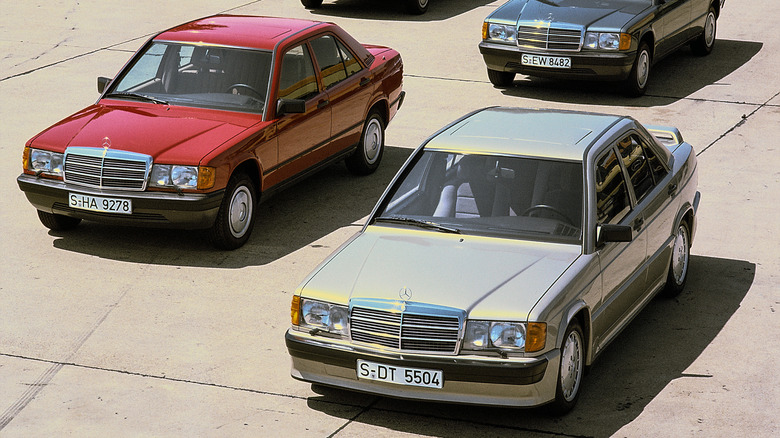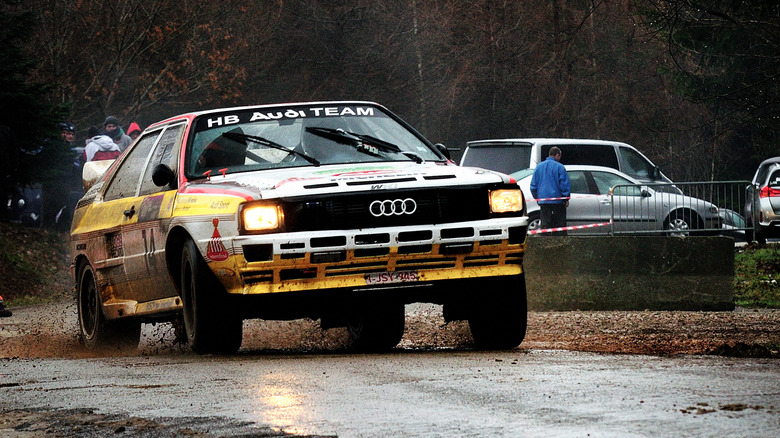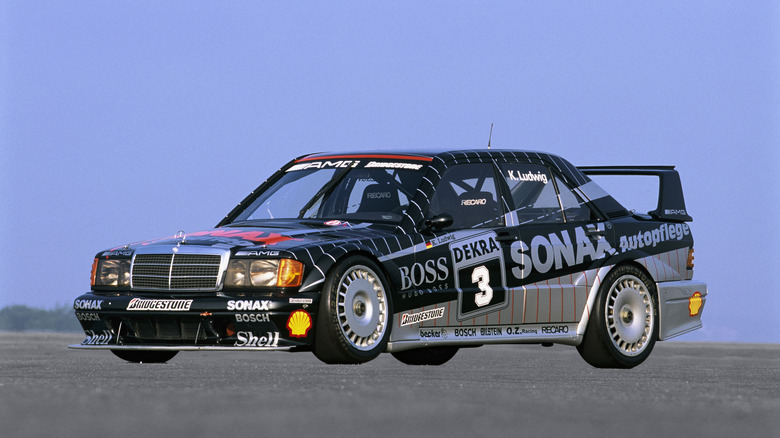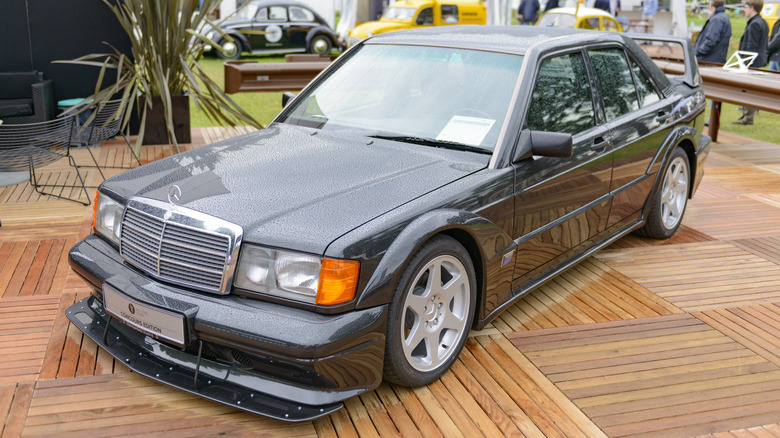Here's What Made The Mercedes 190E Cosworth's Engine So Special
Think of Cosworth and your mind's eye probably serves up a picture of the Ford Escort or Sierra, complete with their massive rear wings and impressive motorsport record. But rewind the clock a little further, to the early 1980s, and the Cosworth name is found on a Mercedes sedan.
More specifically, we're talking here about the Mercedes 190E 2.3-16, where the suffix refers to its 2.3-liter, 16-valve motor that was developed by British engine builder Cosworth.
As any great automotive story should, this one begins with a desire to go racing. Mercedes first thought its compact 190 saloon had the foundations for a successful rally car, and so the German company employed Cosworth to eke out more power from the four-cylinder engine in a bid to take on the Ford Escorts and Lotus Sunbeams of the day.
As is often the case, homologation rules of the time meant Mercedes would have to build and sell a road-going version of its 190 rally car, and thus the Cosworth-powered 190E was born.
Along came an Audi-shaped problem
Unfortunately, Mercedes' rallying dreams were dashed almost immediately, as by now Audi had rewritten the rallying rulebook with its four-wheel-drive Quattro. Audi won the World Rally Championship three years in a row from 1982 to 1984 — a dominance significant enough for Mercedes to cancel its rallying plans altogether.
But all was not lost for the 190, and Mercedes continued to develop the homologated road-going car, now called the 190E 2.3-16 but later known colloquially as the Mercedes 190 Cosworth.
The car arrived at dealerships in 1983 and was powered by a Cosworth-tuned version of the four-cylinder M102 engine. Modifications made by the British firm included a lightweight alloy head, enlarged intake and exhaust ports, mandrel-bent exhausts, alloy pistons, Cosworth tuning for the ignition, and a Bosch K-jetronic fuel injection system.
The engine produced 187 horsepower from 5,500 rpm all the way to the 7,100 rpm rev limiter, making it a potent but unstressed engine with a flat powerband. Meanwhile, right-hand-drive versions of the 190E Cosworth have a different exhaust manifold which keeps it from interfering with steering, but the result is a little bit less power.
In a bid to prove its durability, in 1983 Mercedes set a bunch of long-distance driving records, with a 190E 2.3-16 lapping a high-speed bowl at the Nardo test facility in Italy for 50,000km (31,000 miles) in just 201 hours and 39 minutes. That's an average of over 150 mph for more than eight days straight.
Time to go racing
Fast-forward to 1986 and it's time for the 190E and its Cosworth engine to finally go racing. Instead of rallying, Mercedes had by now turned its attention to circuit racing and the DTM, Germany's touring car championship.
Producing 263hp at 7,750rpm in race trim, the car was entered by a team run by Helmut Marko, who is now an advisor to the Red Bull Formula One team. The car won two races during its first season and earned Marko's team second place in the championship the following year.
Such was the car's performance, Mercedes decided in 1988 to partner with AMG, then a race engine producer and not a part of the German car manufacturer as it is today. The pair evolved the 190E and campaigned successfully in the DTM, dueling with the E30-generation BMW M3 for much of the following decade. But while the BMW quickly gained cult status and is now a six-figure collectors' item, the more mundane-looking Mercedes never became quite so popular. Today, the Cosworth-powered Mercedes fetches in the region of $20,000 to $40,000, according to auction data from Bring a Trailer.
Updated for 1987
For 1987, the Mercedes 190E's engine was enlarged slightly from 2.3 to 2.5 liters, thanks to increasing the stroke by 7mm. The extra capacity was reflected in a new name — 190E 2.5-16 — and the engine also benefited from a new crank, rods and pistons, and re-profiled camshafts.
These tweaks resulted in power going up by 22hp and a modest 4lb-ft increase in torque, bringing totals to 207hp and 177lb-ft. The extra power meant the engine could be fitted with a taller final drive, improving the car's cruising ability. Later cars fitted with a catalytic converter (to reduce emissions in markets where regulation demanded) saw their power fall back down again, to 197hp.
Finally, there were the limited-edition Evo models (not to be confused with Evo Magazine cited earlier). The first featured wider bodywork and larger wheels, but the engine was no more powerful than standard. Then the second-generation Evo came along, pictured above and notable for its huge rear spoiler, front splitter, and an increase in power to 238hp thanks to a larger throttle body. Just 502 examples of each Evo were produced, making them considerably rarer than the standard 190E. The Evo II edition commands far higher values than any other model of 190E, with one example selling for over $400,000 in late-2022.



